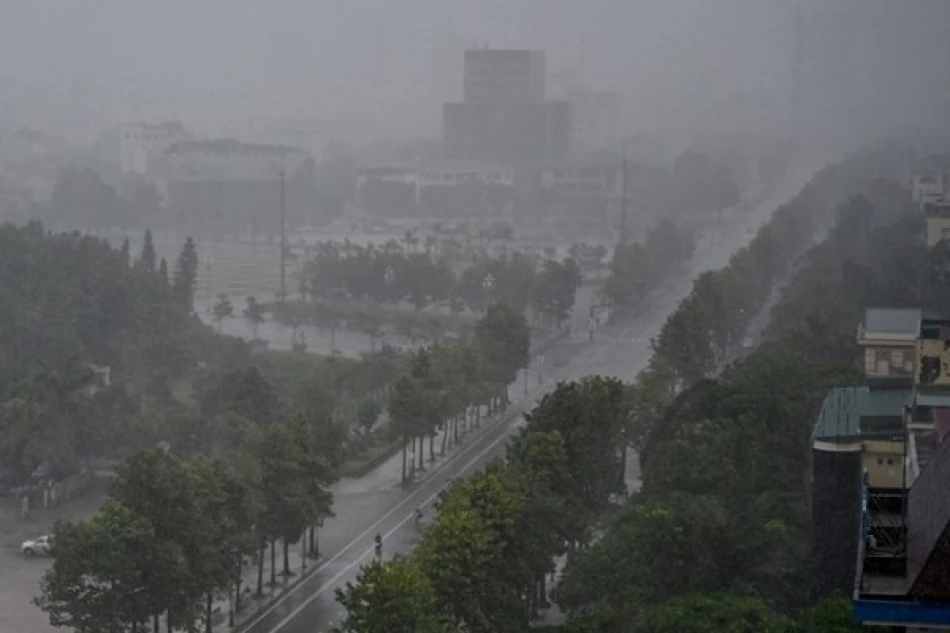
Typhoon Kajiki Submerges China's Hainan Island, Disrupting Coastal Communities
Typhoon Kajiki Forces Mass Evacuations as China Braces for Tourism and Economic Disruption
Typhoon Kajiki unleashed powerful winds and torrential rains across China's Hainan Island and parts of Guangdong Province on Sunday, forcing authorities to evacuate 20,000 people and shut down operations in key tourist destinations. As the storm intensifies with sustained winds of 162 km/h and heads toward Vietnam's central coast, the disruption highlights China's growing vulnerability to extreme weather events that threaten both its domestic tourism industry and regional economic stability.
Immediate Impact on Hainan's Tourism Hub
The typhoon's path directly targeted Hainan Island, China's southernmost province and a critical tourism destination often called "China's Hawaii." Sanya, the island's premier beach resort city, bore the brunt of the storm's impact with predicted rainfall of 25-35 centimeters.
Local authorities took no chances, implementing comprehensive shutdowns that included:
Complete closure of businesses and scenic tourist areas throughout Sanya, effectively halting the city's primary economic engine during what should be peak travel season.
Suspension of all public transportation and shipping services, isolating the island and stranding tourists who had planned to leave or arrive during the storm period.
Economic Implications Beyond Tourism
While the immediate focus remains on safety, Kajiki's impact extends far beyond temporary tourism losses. Hainan serves as a crucial testing ground for China's duty-free shopping policies and represents Beijing's ambitions to develop the island into a major international tourism and consumption hub by 2035.
The typhoon disruption comes at a particularly sensitive time as China's domestic tourism sector continues recovering from pandemic-related setbacks. Any extended closure of Hainan's facilities could delay the island's economic recovery and impact investor confidence in China's ability to weather both natural disasters and economic challenges simultaneously.
Regional Weather Patterns Signal Broader Concerns
Kajiki's trajectory toward Vietnam's central coast reflects a troubling pattern of intensifying typhoons in the South China Sea region. The storm gained strength as it moved westward over open waters, reaching Category 2 equivalent intensity with sustained winds of 162 km/h.
This development mirrors similar extreme weather events that have increasingly disrupted Southeast Asian economies. The Philippines, Taiwan, and southern Japan have all experienced more frequent and intense typhoons in recent years, suggesting that regional governments and businesses must adapt to a new normal of weather-related disruptions.
Preparedness Measures Reflect Lessons Learned
China's decision to evacuate 20,000 people from potentially dangerous areas before the storm's arrival demonstrates the country's improved disaster preparedness compared to previous decades. This proactive approach contrasts sharply with the reactive measures that characterized China's response to natural disasters in the 1990s and early 2000s.
The comprehensive shutdown of Sanya's operations, while economically costly, reflects a mature understanding that short-term economic losses pale in comparison to potential human casualties and long-term infrastructure damage. This calculated approach positions China favorably compared to other regional economies that have suffered massive losses due to inadequate storm preparation.
Looking Ahead: Climate Adaptation as Economic Strategy
As Kajiki continues its path toward Vietnam, the storm serves as a reminder that climate resilience has become an essential component of economic planning in Southeast Asia. For China specifically, protecting Hainan's tourism infrastructure represents a critical test of the country's ability to balance ambitious development goals with environmental realities.
The swift evacuation and comprehensive shutdown procedures implemented for Kajiki may well become the template for future storm responses across China's coastal regions, potentially influencing how other countries in the typhoon-prone region approach similar challenges.
 Layla Al Mansoori
Layla Al Mansoori







